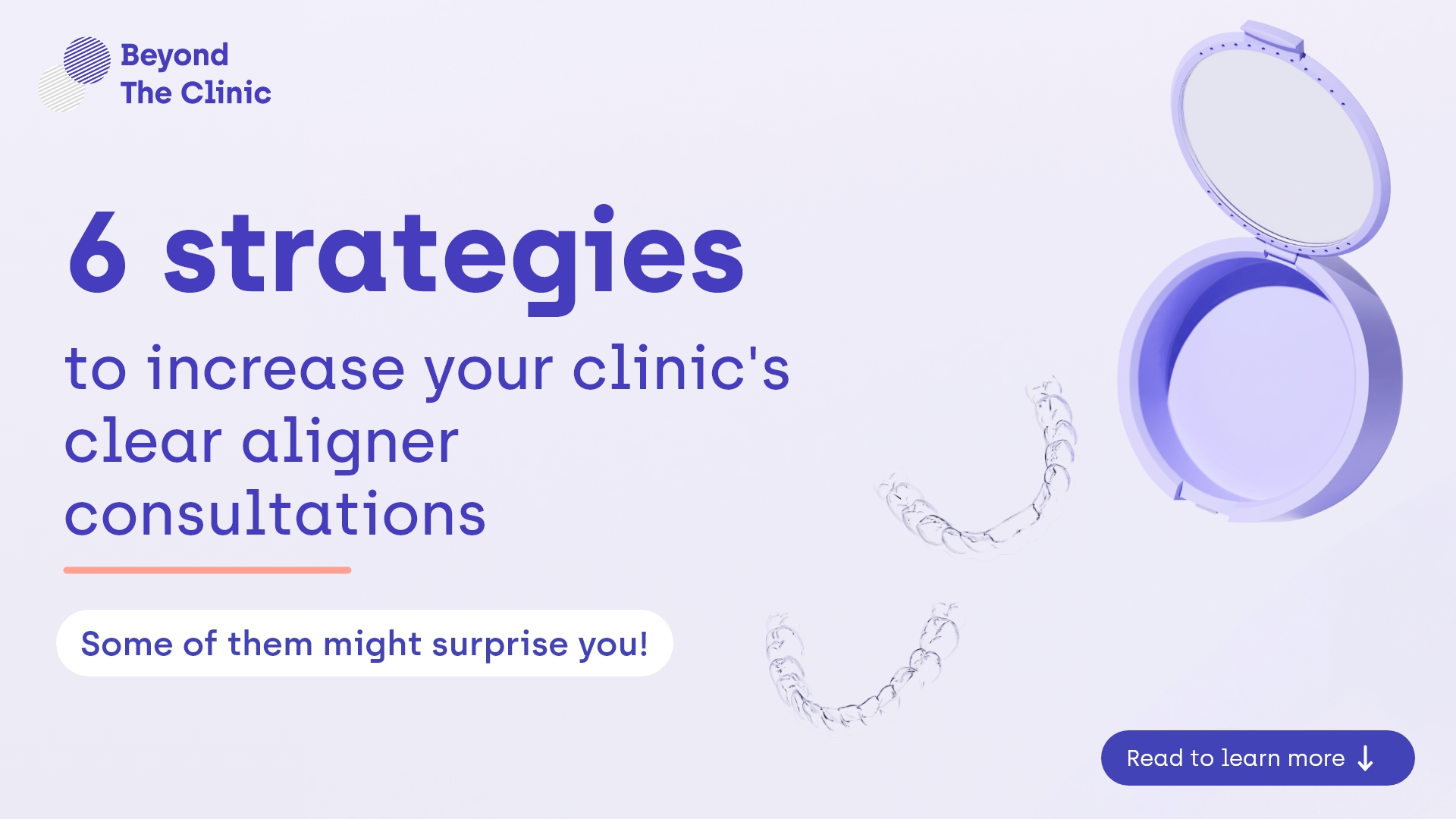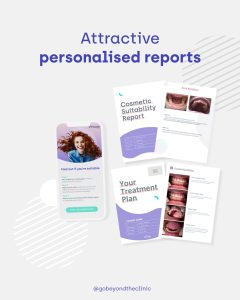6 strategies for clinics to grow teeth aligner consultations

Key points
- The more consultations you provide, the more aligner cases you will start.
- Patients won’t attend aligner consultations unless they feel safe, heard and understood. Negative or stressful emotions reduce the likelihood of conversions.
- There are 5 important messages that need to be clearly communicated to prospective patients.
- Understanding the 6 different types of clear aligner patients will help grow new consultations and increase case acceptance.
- Make it easy for patients to get started with treatment with a digital journey and keep them interested through engaging discussion.
- Consistency is key: define your goals and reward your team when they are reached!
Dodge the Lizard brain to attract teeth aligner consultations
The Triune or three-part brain is a model of the evolution of the brain and our behaviour. It divides the brain into three parts: the lizard brain, mammal brain, and human brain. The lizard brain corresponds to fight or flight responses and protects us from threats, pain, and fear. So, how does this apply to dentistry?
If a patient believes that the teeth straightening option you offer is painful, time consuming or out of their budget, the lizard brain will respond by trying to protect them from these negative outcomes. The good thing is, the lizard brain responds to simple messages, icons and images, so to dodge it, these messages need only be positive rather than negative.
The 5 important messages
As many as 30% of the population think about teeth straightening, and there are 5 main messages that need to be clearly, widely, and positively communicated for prospective patients to feel validated and open to proceeding. These should be made easily discoverable visually, rather than spoken:
- Price – Nobody wants to feel embarrassed or judged about not being able to afford a service. Prices that say “from” or “starting price” imply hidden costs. This may deter people from inquiring and creates an environment that patients often don’t feel safe in.
- Appearance & comfort – Fixed braces are notoriously unsightly and painful, but that’s what people often think of when they hear “teeth straightening”. It’s important to show patients they can achieve their dream smile discreetly and comfortably with aligners.
- Complicated or easy – There is this idea that teeth straightening needs to be a hassle to start, but it’s just not true! Tailored teeth straightening can be started with a simple online consultation from a smartphone in only a few minutes – easy.
- Specific to patients’ needs – Nowadays, people are used to “one-size-fits-all” solutions, with tailored services costing a pretty penny. Clear aligner treatment is custom made to each patients’ personal wants and needs, without breaking the bank.
- Less clinic visits – Realistically, who really has time for bi-monthly clinic visits? It’s time to do away with the idea that teeth straightening requires constant dentist appointments. Nobody is too busy to achieve their dream smile with hybrid treatment!
Without addressing these 5 factors in a reassuring way, patients may experience doubt and fear – both of which block action. It is important to always communicate with empathy and transparency in all your interactions: on your website, posters, window advertisements, A-boards, social media, emails, and, of course, during in-clinic interactions.

Understand the 6 types of clear aligner patients
There are 6 types of aligner patients, both outside and within your practice. Engaging all 6 will grow your aligner consultations and case acceptance.
Outside your clinic or dental practice
- Potential new patients in your local area who have thought about getting straighter teeth in the past but are not currently looking into treatment.
- New patients who are specifically looking into teeth straightening, have seen your website or clinic but have not contacted you.
- Potential new patients who have sent your practice an email about teeth straightening but never came in for an appointment.
- Patients who attended a consultation appointment but didn’t go ahead with treatment.
Inside your clinic or dental practice
- Existing patients with crowding who would be open to improving their gum and dental health through straightening.
- Existing patients with crowding or spacing who would be open to straightening to improve their smile cosmetically.
It’s not what you say. It’s how they feel when they hear it
That’s right! Contrary to popular belief, the best way to connect to patients in a meaningful way is by starting on the INSIDE before working on the OUTSIDE.
What that means is, it’s important to make sure patients feel good first and foremost. When patients are at home, they are relaxed. A relaxed mind is open to new stimuli and information. At the clinic, more often than not, patients are anxious. This means they have a reduced attention span and are less receptive to new information.

Hormones strongly affect the way we think and process information. From an endocrine perspective, the differences between the open and closed mind are dopamine, serotonin and oxytocin vs. cortisol and adrenaline. If patients learn new information in a stressed state of mind, they are much less likely to take you up on an offer, even if it is as good as affordable, discreet and hassle-free teeth straightening.
However, if patients learn new information at home in a relaxed, content state, they will likely want to know more and discuss their options. Let’s call this method Digitise & Discuss:
- Inform patients you provide digital screening with simple smartphone photos.
- Deliver a personalised report digitally with more details on preventive dental health.
- Provide digital communication via a reliable portal to discuss questions and provide more information now that patients are interested in their options.

Connect with your patients digitally
In this day and age, people value quality digital interaction. Help more patients engage with you by digitally communicating the 5 important messages discussed in section 1, followed by a clear and easy call to action to start a digital consultation.
The digital consultation allows them to submit photos and answers within a few minutes from their smartphone, but most importantly it engages them in a digital conversation. The more conversations you have, the more connections are created. As patients come to recognise your practice as a safe space that listens to and engages with them about their individual wants and needs, the more likely they are to attend an in-clinic consultation.
Engaging follow-ups rather than robotic answers!
Many people enquire by email asking about the price of treatment, and many may have booked a consultation that they end up not attending. Rather than dismissing these patients as non-serious deal hunters and answering robotically, treat them with empathy and with the same enthusiasm as any other (seemingly more serious) patient.
Personal issues, accidents, health issues, or a lack of trust towards your clinic can always stop patients from proceeding at the time. This does not mean they aren’t interested full stop. By building trust and following up in an engaging way, more patients will feel encouraged to contact your clinic when they are ready and have all the means necessary to proceed.
For example, many of our patients waited 2 years after their initial consultation before committing to treatment. Throughout that time, we kept in touch with educational content, engaging information and questions through a mixture of email, sms, social media, and even letters. The more engaging the content and the more memorable and trustworthy the communication, the more likely the conversion.
Consistency is key: define tangible teeth aligners goals
It’s easy to overlook real progress if you’re not tracking it. Every week, take note of how many digital screenings you offered, how many online consultations you completed, and how many patients received a follow-up. As these weekly numbers increase, your conversions and aligner cases will also rise. Make it a game: set a target and bonus for your team if you hit 10, 20 or 30 cases a month. This way it becomes fun and the entire team is more motivated to continue engaging patients and building their trust.
Follow these 6 strategies to increase your number of aligner cases!



